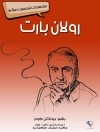Presents a new genealogy and synoptic overview of modern Irish fiction.
Terror and Irish Modernism offers a synoptic overview of modern Irish fiction. Covering more than two centuries of literary production, Jim Hansen locates the root structure of modern Irish fiction in the masculine gender anxiety of one of the nineteenth century’s most popular literary genres: the Gothic. Addressing both the decolonization of Ireland and the politics of literary form, Hansen sheds new light on canonical works by Maria Edgeworth, C. R. Maturin, Oscar Wilde, James Joyce, and Samuel Beckett by reading them all as part of the generic tradition of the Irish Gothic. He focuses in particular on how the Irish Gothic tradition translated the English Gothic’s female-confinement narrative into a story about confined, feminized male protagonists. In reading this male gender-disorientation as the foundational condition of modern Irish political identity, Terror and Irish Modernism provides a thoroughly new genealogy of modern Irish fiction.
Mục lục
Acknowledgments
1. Gothic Double Binds, Or, Irish Terrorists Confront an Unholy Union
2. The Wrong Marriage: Maturin and the Double Logic of Masculinity in the Unionist Gothic
3. The Revolution Within: Wilde’s Gothic and the Confi nes of Convention
4. Overcoming Allegory: Joyce’s Ulysses and the Limits of the Irish Gothic
5. Engendering a Cartesian Gothic: Generic Form as History in Beckett’s Fiction
EPILOGUE
The Poetics of Fear: Gothic Inheritance at the End of Modernity
Notes
Bibliography
Index
Giới thiệu về tác giả
Jim Hansen is Assistant Professor of English and Critical Theory at the University of Illinois at Urbana-Champaign.












